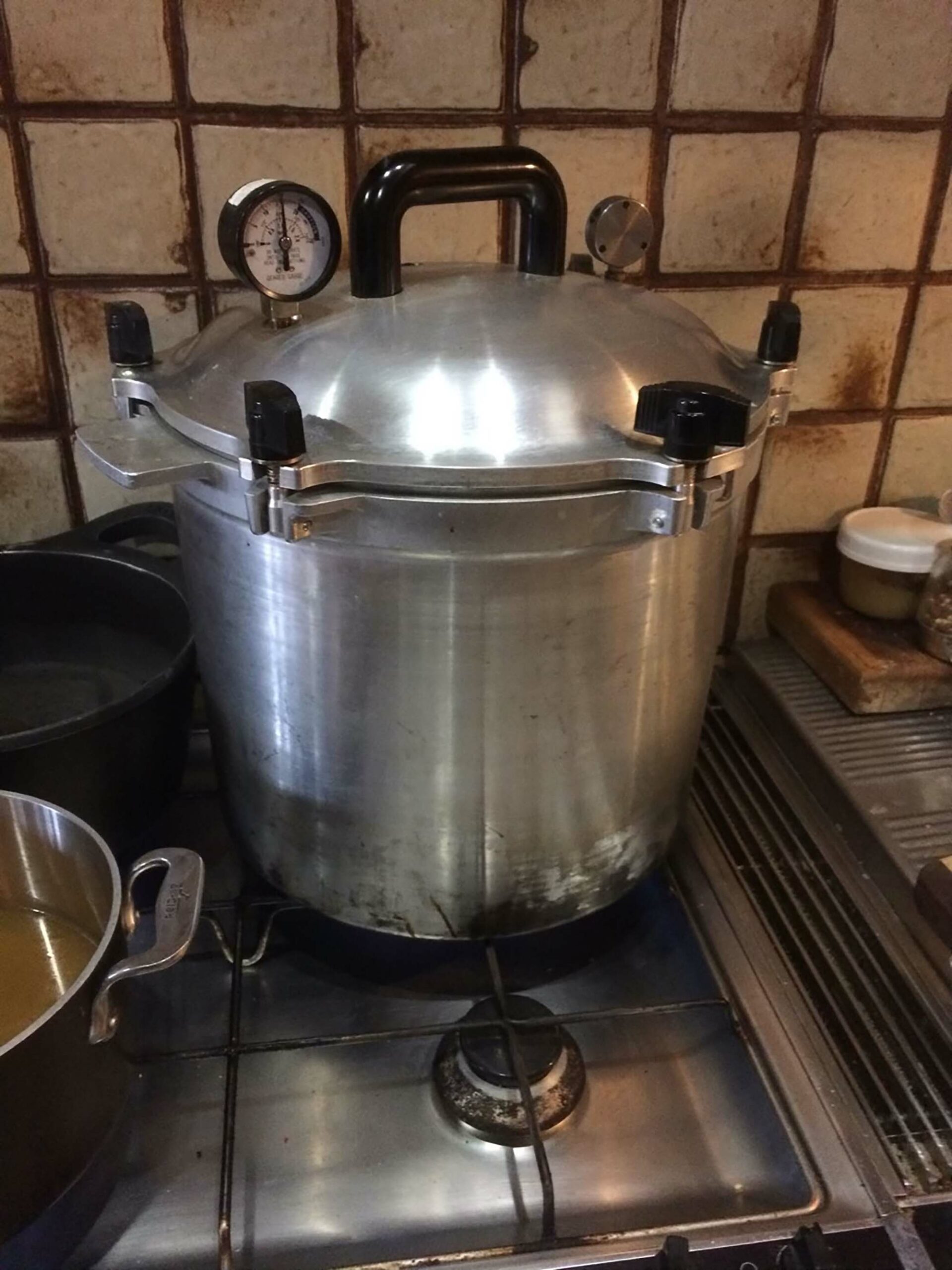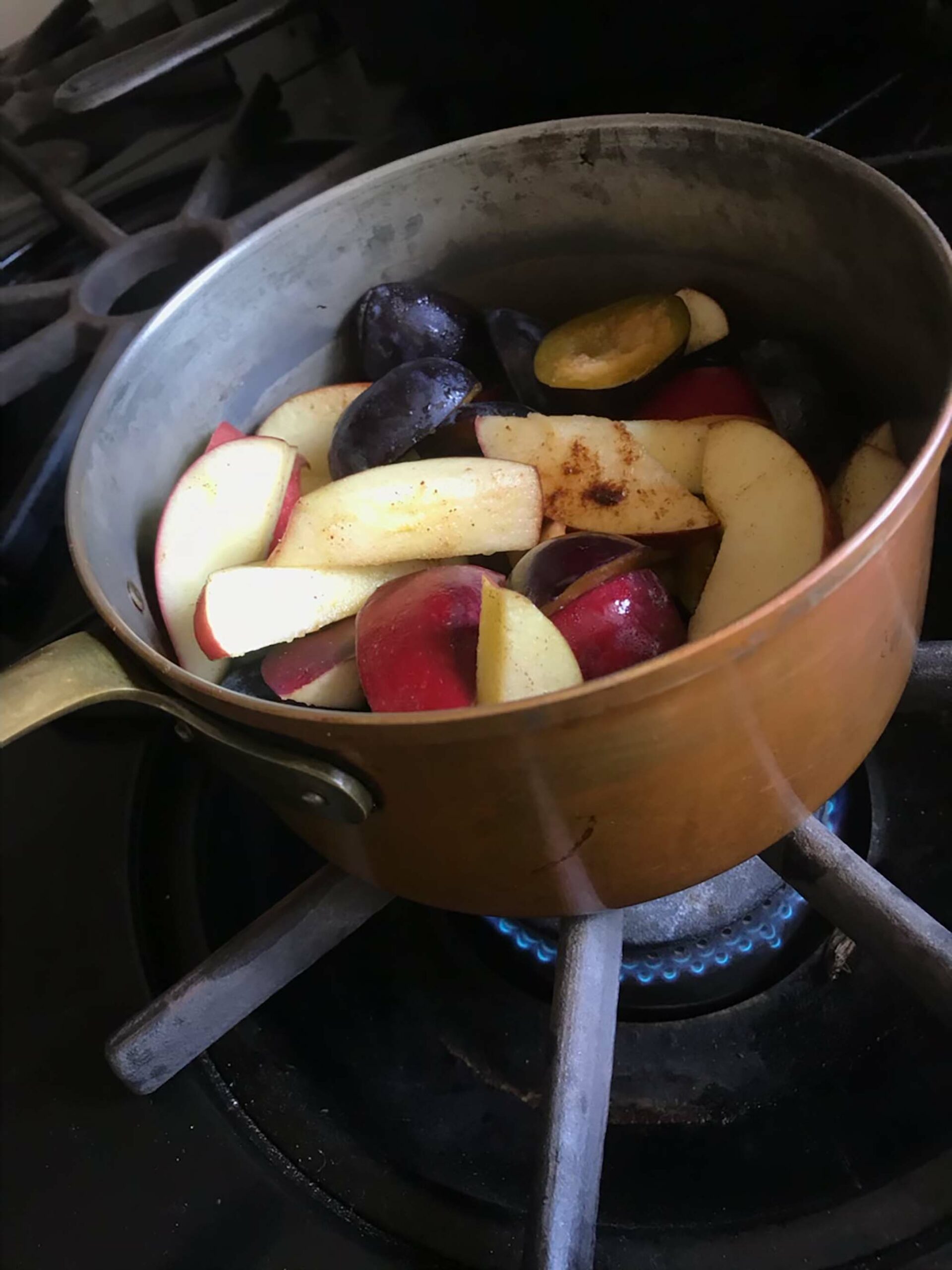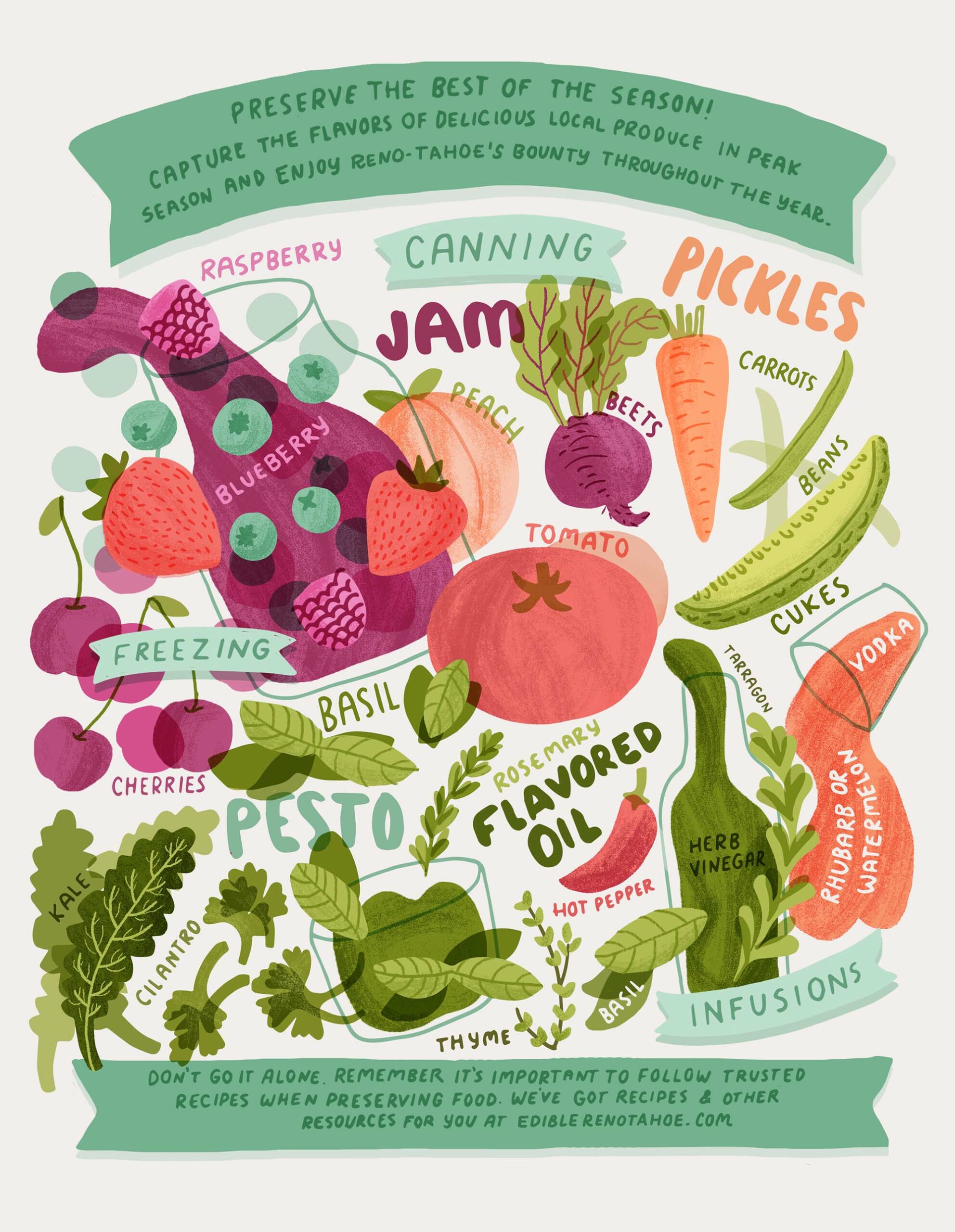Try new methods of preserving food this fall.
The produce at farmers’ markets is changing as summer turns to fall, but that shouldn’t mean you won’t taste those fresh flavors until next year. Various methods of preserving food have been around as long as humans have existed, but in the age of instant gratification (read: DoorDash, HelloFresh, and Instacart), most of us have lost touch with the process.

That’s certainly not the case for Jill Heaton, a senior vice provost at the University of Nevada, Reno; partner to GirlFarm founder Wendy Baroli; and seasoned food preserver.
“We grow so much food that it feels like the right thing to do to honor that food,” Heaton says. “During the pandemic, for example, we could have gone months and months without going to the grocery store if we had to — though we might have run out of coffee.”
Preservation Methods
Heaton’s preferred preservation method is pressure canning, which uses high pressure in a specialized cooker to heat low-acid foods (such as meats, beans, broth, and vegetables) in jars well above boiling to kill bacteria, preserve the foods, and prevent spoilage. (Alternatively, water-bath canning — when boiling water is used to heat and seal jars — is sufficient for pickles, jams, and other high-acid foods.)


Taking the proper steps to eliminate botulinum toxin, which leads to botulism, a serious illness, is the main concern. This particular bacterium does not produce gas when it grows, so there would not be a popped lid or bulging can to indicate its presence.
Heaton pressure cans a variety of soups, meat stews, and entire meals packed into Mason jars. A favorite is her burrito in a jar, made with seasoned rice, beans, and meat ready to be wrapped in a fresh tortilla. A 30-pound bag of dried pinto beans may take a few days for Heaton to get through canning, but it will last a couple of years and is incredibly cost effective. A bumper crop of apricots can be enjoyed for years to come.
Her top tip for getting into canning? Consult the U.S. Department of Agriculture’s Complete Guide to Home Canning, which can be accessed digitally for free; a hard copy can be purchased online through Purdue University’s Education Store.
“I pull it out, and it’s my reference for the amount of time something has to be cooked and whether or not that needs to be under pressure,” Heaton explains.
Canning times vary based on food type and elevation of the location where the process is being carried out.
“At sea level, you can use five pounds of pressure, but at our elevation here in Reno, it’s 15 pounds of pressure,” she says, adding that she recommends the All-American pressure cooker and canner. “It is the most expensive one out there, but it is tried and true. It’s the safest. It has lots of redundant mechanisms in it to keep it from getting over-pressurized.”
Heaton notes that the biggest misconception about canning is what constitutes a proper seal. Because heat causes a pressure differential, it can pull down the tab on the lid without a proper seal. To avoid this, make sure to follow the recommended time guidelines for the type of food you’re canning. After the jars cool 12 to 24 hours, test the seal by pressing down on the middle of the lid. If it springs up, it is not sealed properly.
Keep your pantry stocked for the months ahead with a whole assortment of canned foods, from peaches and kimchi to pickled beans and beef stew. But look to credible sources, such as the USDA, for information on the basics before jumping to more ambitious meals in jars. The University of Nevada Cooperative Extension also provides ample resources online through its Home Food Preservation Program and even hosts classes to teach preservation techniques.
Beyond the Can
While canning is certainly the longest-lasting method of preservation, there are other methods of food preservation with less of a learning curve.
Fresh herbs can be dried in a dehydrator or laid out on a sheet pan for a couple weeks to store for use over the winter. You also can infuse olive oil with your favorite aromatics or add some heat with peppers.
Using a dehydrator or the oven set at its lowest temperature, you can dry sliced fruits or cherry tomatoes. Freeze pre-portioned bags of fresh strawberries, blueberries, or sliced stone fruits to use in pies and tarts in the winter, or simply to place atop a warm bowl of cooked grains. Soak fruit in high-proof alcohol to capture its flavor in cocktails.
“We make pesto sauces and freeze them in ice cube trays. Then you pop them out in a zip-lock bag, and you’ve got individual cubes so you can portion out however much you need for what you’re cooking,” Heaton adds.
To use what you have, sub different types of greens for basil (think kale, arugula, spinach, or even carrot tops) and whatever nuts are on hand for pine nuts.
Homemade broth using vegetables (or even their scraps) and chicken, beef, or pork bones will flavor soups for fall and winter in a way that’s not possible with the store-bought version, Heaton contends. Freeze and stock up, or pressure-can to store in the pantry. You’ll be glad you made the extra effort.
RESOURCES
Home Food Preservation Program, University of Nevada Cooperative Extension
Extension.unr.edu/program.aspx?ID=100
Class: Harvest and Storing — Intro to Canning from Your Garden
11 a.m. – 1 p.m., Sept. 16
Rail City Garden Center
$10 per person
Railcitygardencenter.com/rail-city-calendar
Doreen Spires will teach you about canning garden vegetables, including how to get started, the difference between water bath and pressure canning, materials needed, and more. Canning jars available for purchase.



